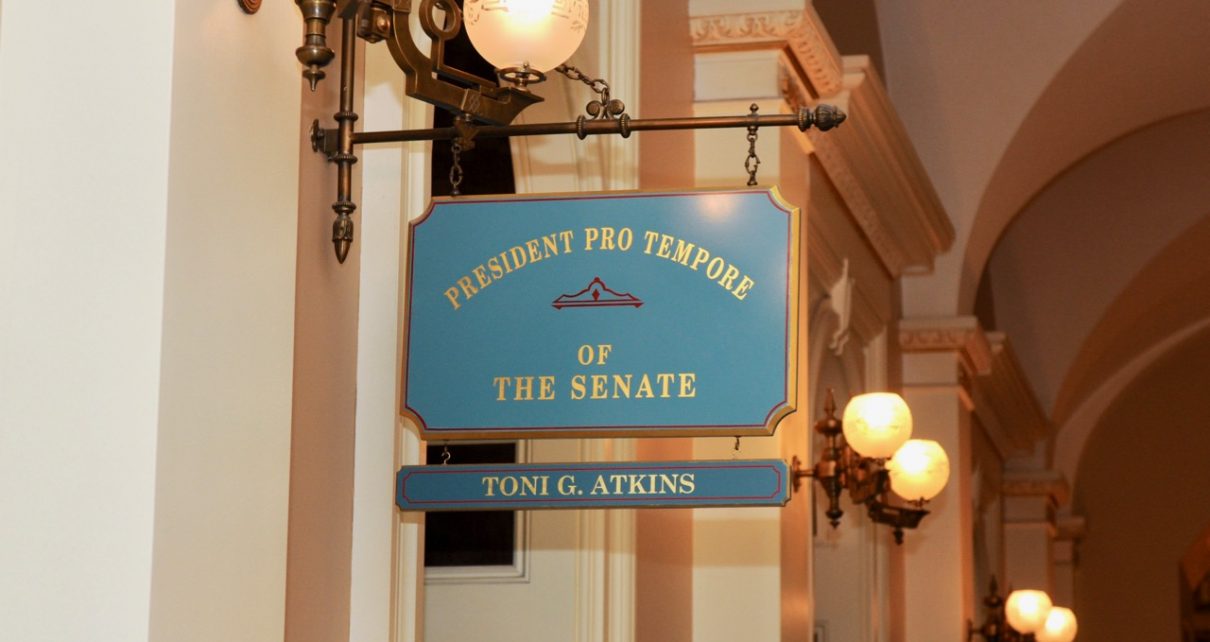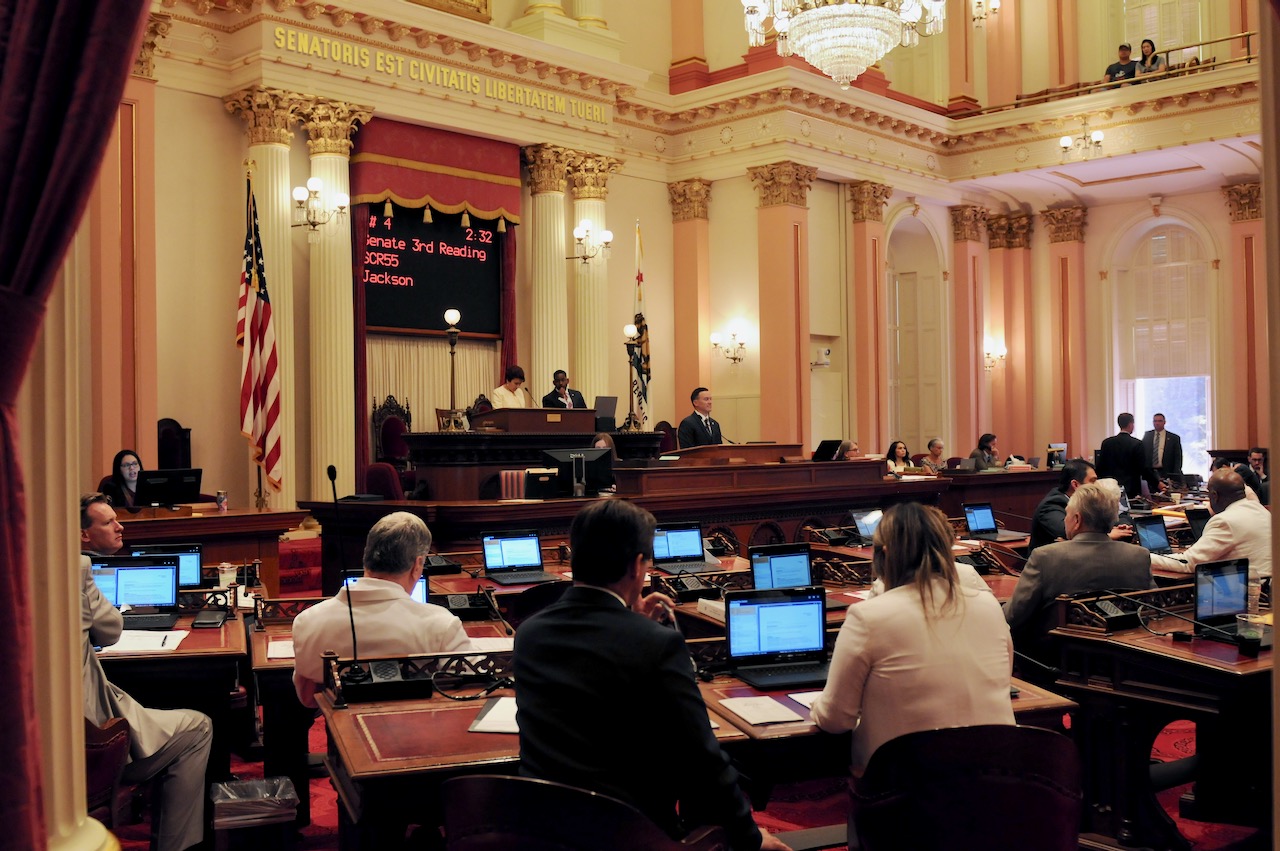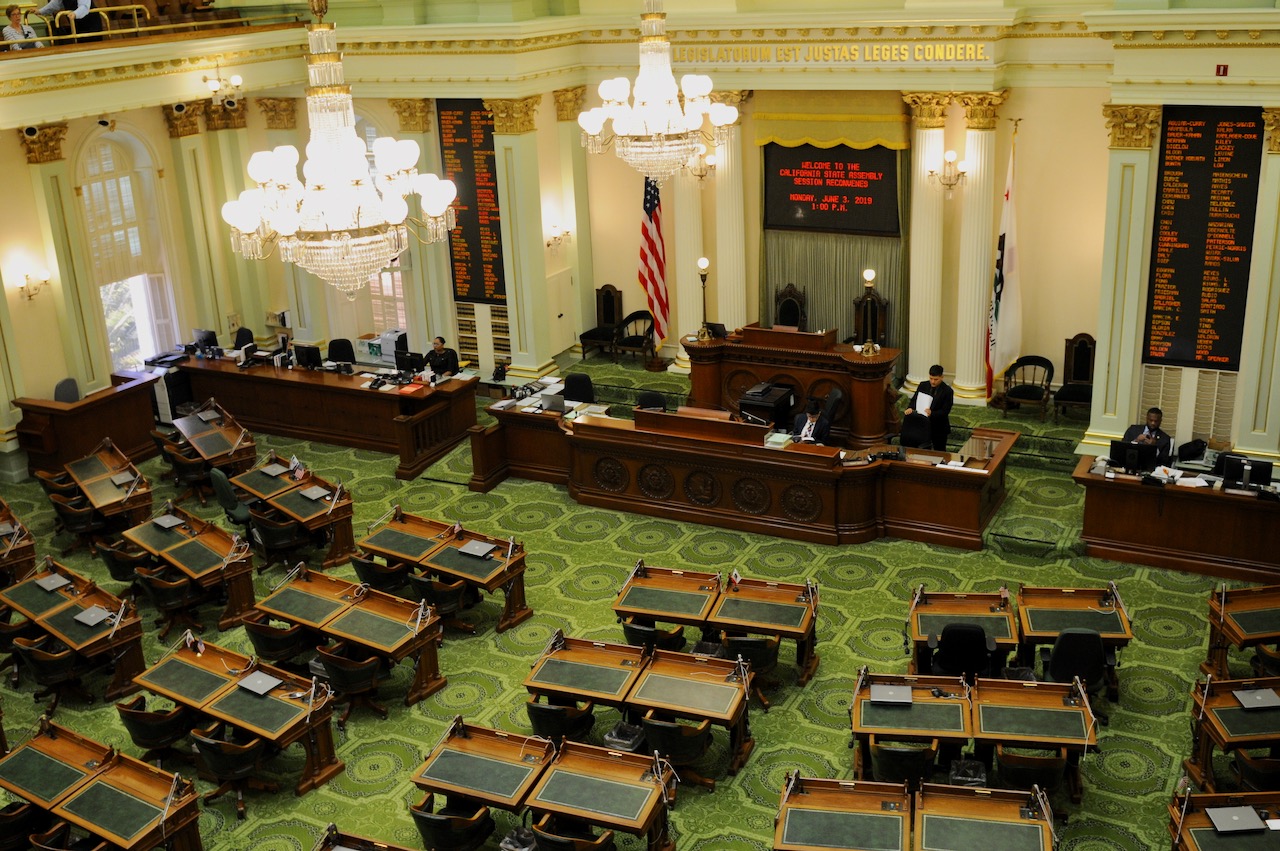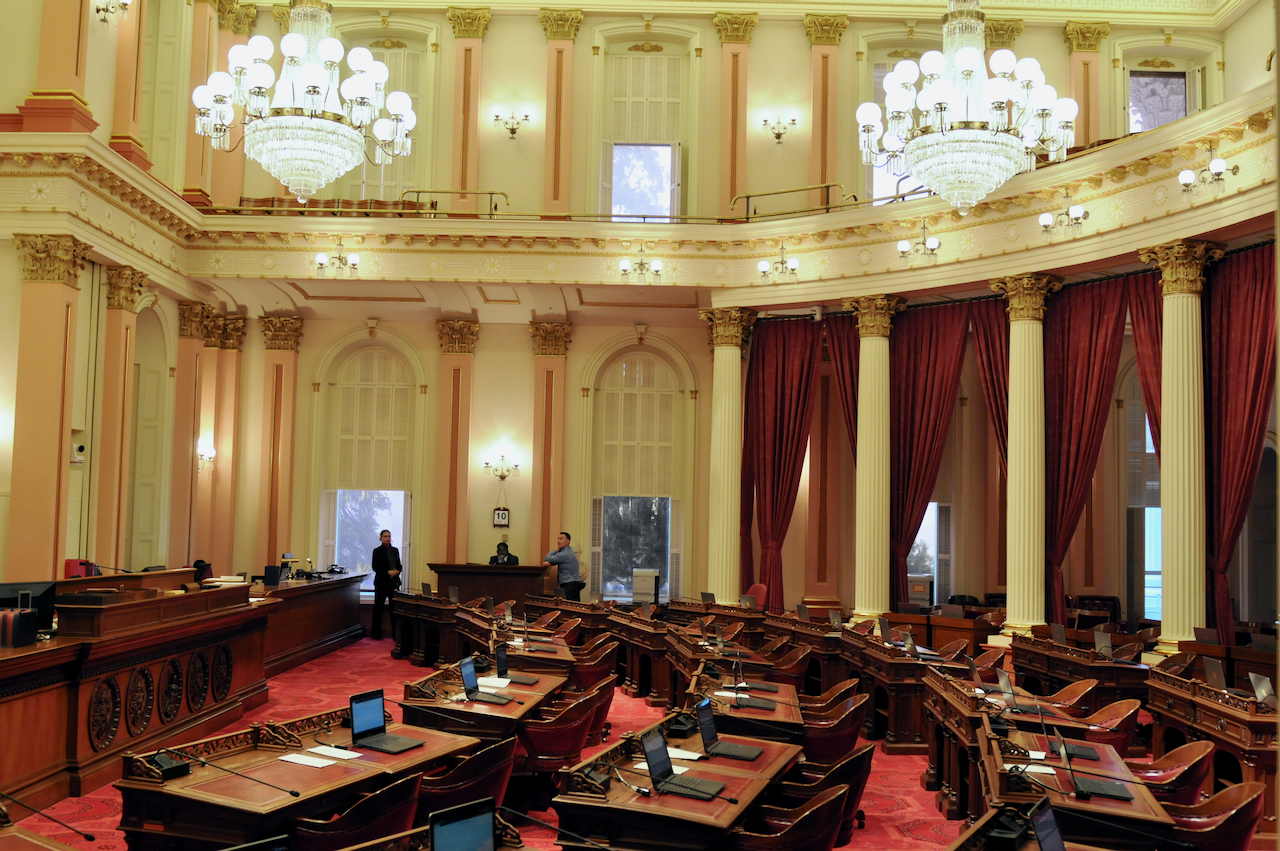
President Pro Tempore of the Senate. (Photo: Kevin Sanders for California Globe)
Key Provisions of the Legislature’s Internal Rules – The Joint Rules – Part I
The State Printer must observe the directions of the Joint Rules Committee in printing all measures
By Chris Micheli, April 8, 2020 6:18 am
Beyond the relevant provisions of the California Constitution (contained primarily in Article IV), as well as applicable sections of the California Government Code, the State Senate and State Assembly are governed by their Joint Rules, the Standing Rules of the Senate and the Standing Rules of the Assembly. This article provides a summary of the Joint Rules of the Senate and Assembly.
Joint Rules
The following is a summary of the Joint Rules with the corresponding rule number at the end of the explanatory sentence. Note that some Rule numbers do not exist.
Standing Committees – Each house appoints standing committees based upon each house’s own rules. (1)
Joint Meeting of Committees – Whenever the “same or like bill” has been referred to both Senate and Assembly committees, the chairs shall arrange for a joint meeting to consider the bill. (3)
Effect of Adoption of Joint Rules – Adopting Joint Rules for a special session does not modify or rescind the Joint Rules for any previous session. (3.5)
Definition of Word “Bill” – Bill as used in the Joint Rules includes any constitutional amendment or resolution. (4)
Concurrent and Joint Resolutions – Concurrent resolutions relate to matters to be treated by both houses, while joint resolutions relate to matters connected with the federal government. (5)
Resolutions Treated as Bills – Concurrent and joint resolutions are generally treated as bills, with four exceptions, such as only one formal reading in each house. (6)
Title of Bill – The title of every bill introduced must convey an accurate statement of the contents of the bill and indicate the scope of the act and the object to be accomplished. A “mere reference” to a code section by number is not deemed sufficient. (7)
Division of Bill Into Sections – A bill amending more than one code section must contain a separate section for each code section amended. (8)
Digest of Bills Introduced – A bill may not be introduced unless it has a cover attached by Legislative Counsel and is accompanied by a digest showing the changes in existing law that are proposed by the bill. Neither the Digest nor the bill can be altered. (8.5)
Digest of Bills Amended – Whenever a bill is amended, the Senate Secretary or Assembly Chief Clerk must request Legislative Counsel to prepare an amended digest and have it printed on the bill first page of the bill as amended. Any material changes in the digest must be indicated. (8.6)
Errors in Digest – If a material error in the digest is brought to the Legislative Counsel’s attention, a corrected digest is prepared and either the Assembly Speaker or Senate President pro Tempore can have a corrected version printed. (8.7)
Bills Amending Title 9 of the Government Code – A bill that amends, adds or repeals any provision of Government Code Title 9 must notify the Senate Secretary or the Assembly Chief Clerk, who then delivers a copy of the bill to the FPPC. (8.8)
Bills Amending the California Stem Cell Research and Cures Act – A bill that amends, adds or repeals any provision of the California Stem Cell Research and Cures Act must notify the Senate Secretary or the Assembly Chief Clerk, who then makes copies accessible in the Bill Room for the public and news media at least 14 days before passage. (8.9)
Bills Amending Section 6 of the Smaller Classes, Safer Schools and Financial Accountability Act – A bill that amends, adds or repeals Education Code Section 47614 must notify the Senate Secretary or the Assembly Chief Clerk, who then makes copies accessible in the Bill Room for the public and news media at least 14 days before passage. (8.95)
Restrictions as to Amendments – A substitute or amendment must related to the same subject as the original measure and an amendment is not in order when all that would be done to the bill is the addition of a coauthor, unless the Rules Committee grants prior approval. (9)
Changes in Existing Law to Be Marked by Author – In a bill amending or repealing a code section, any new matter is underlined, and any matter to be omitted is with a horizontal line through the center. When printed, the new matter is in italics and the matter omitted is in strikeout. When an entire code, or an entire title, part, division, chapter, or article of a code is repealed, those sections are not set forth in the bill or amendment. (10)
Re-referral to Fiscal and Rules Committees – A bill is re-referred to the fiscal committee of both houses when it would do any of the following: (1) Appropriate money; (2) Result in a substantial expenditure of state money; (3) Result in a substantial increase or loss of revenue to the state; (4) Result in substantial reduction of expenditures of state money by reducing, transferring, or eliminating any existing responsibilities of any state agency, program, or function. In addition, any concurrent and joint resolutions are re-referred to the fiscal committee of each house when they contemplate any action that would involve either (1) Any substantial expenditure of state money or (2) Any substantial loss of revenue to the state. This rule may be suspended with Rules Committee approval and a 2/3 vote of the house. (10.5)
Short Title – A bill may not add a short title that names a current or former Member of the Legislature. (10.6)
Heading of Bills – A bill or resolution may be authored only by a Member or committee of the house of origin. All others can be principal coauthors or coauthors. A bill may not indicate that it was introduced at the request of a state agency, officer or any other person. (10.7)
Consideration of Bills – There must be a written request to consider and act upon a bill within 30 calendar days filed with the Senate Secretary or Assembly Chief Clerk. The Rules Committees determine whether there exists an urgent need for dispensing with the 30-day waiting period following introduction. If recommended, the house must adopt the authorizing resolution by ¾ majority vote. (10.8)
Printing of Amendments – Any bill amended in either house must be immediately reprinted. The new matter is printed in italics and the matter omitted is in strikeout. If an amendment omits the entire contents of the bill, the matter omitted does not need to be reprinted. A brief statement will appear after the last line of the amended bill identifying the previous version of the bill that contains the complete text of the omitted matter. (11)
Manner of Printing Bills – The State Printer must observe the directions of the Joint Rules Committee in printing all measures. (12)
Distribution of Legislative Publications – Senate Secretary and Assembly Chief Clerk must order bills and legislative publications necessary for conducting business. No more than one copy of a bill or legislative publication is free to anyone, except Members, Legislative Counsel, and the nine constitutional officers, the courts, libraries, and the press. State Printer fixes the costs of bills and publications. The total number of each bill to be printed may not exceed 2500. (13)
Legislative Index – Legislative Counsel provides for the periodic publication of a cumulate Legislative Index, which must include tables of sections affected by pending legislation. The State Printer must print the Index. (13.1)
Summary Digest – Legislative Counsel must compile and prepare for publication of a summary digest of legislation passed at all sessions. It is a separate publication and is made available to the public at a price. (13.3)
Statutory Record – Legislative Counsel prepares for publication a cumulative statutory record, which is printed by the State Printer. (13.5)
Printing of the Daily Journal – The State Printer must print copies of the Daily Journal of each day’s proceedings. Also printed is a compilation at the end of session of all the journals in book form. (14)
What Shall Be Printed in the Daily Journal – The Daily Journal of each house must include messages from the Governor and the other house, titles of all measures when introduced or acted upon, every vote taken and paper presented, and a true and accurate account of the house’s proceedings. (15)
- Third Quiz on Where Areas of Law Are Found in the California Codes - December 30, 2025
- Management of Unclaimed Property - December 30, 2025
- Petitions and Responses in Arbitration - December 29, 2025





One thought on “Key Provisions of the Legislature’s Internal Rules – The Joint Rules – Part I”